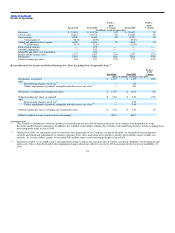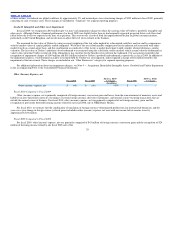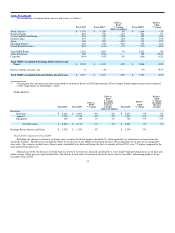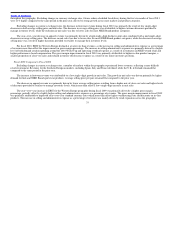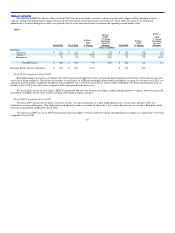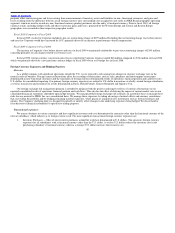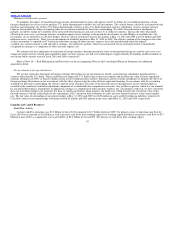Nike 2010 Annual Report Download - page 37
Download and view the complete annual report
Please find page 37 of the 2010 Nike annual report below. You can navigate through the pages in the report by either clicking on the pages listed below, or by using the keyword search tool below to find specific information within the annual report.
Table of Contents
Central and Eastern Europe
Fiscal 2010 Fiscal 2009
FY10 vs.
FY09
% Change
FY10 vs.
FY09
% Change
Excluding
Currency
Changes Fiscal 2008
FY09 vs.
FY08
% Change
FY09 vs.
FY08
% Change
Excluding
Currency
Changes
(dollars in millions)
Revenues
Footwear $ 660 $ 752 −12% −13% $ 702 7% 13%
Apparel 399 508 −21% −22% 499 2% 5%
Equipment 91 113 −19% −19% 108 5% 8%
Total Revenues $ 1,150 $ 1,373 −16% −17% $ 1,309 5% 9%
Earnings Before Interest and Taxes $ 281 $ 415 −32% $ 358 16%
Fiscal 2010 Compared to Fiscal 2009
Economic conditions in Central and Eastern Europe remained difficult as most markets within the geography experienced lower revenues in fiscal
2010 as compared to fiscal 2009. We are beginning to see signs of stabilization in these markets as a result of improving macroeconomic conditions,
increasing brand momentum, and tight management of inventory. On a currency−neutral basis, future orders scheduled to be delivered during the first six
months of fiscal 2011 were 3% higher compared to the same period in the prior year.
The decrease in footwear revenue was due to a decline in average selling price, while unit sales remained flat compared to fiscal 2009. The decline in
average selling price was primarily the result of higher discounts provided to retailers to manage their inventory levels.
The year−over−year decrease in apparel revenue was primarily driven by a double−digit decrease in average selling price and a mid single−digit
decline in unit sales. The decline in average selling price was primarily the result of higher discounts provided to retailers to manage their inventory levels,
while the decline in unit sales was due to lower sales in most key product categories.
The year−over−year decrease in Central and Eastern Europe’s EBIT during fiscal 2010 was the result of lower revenues, a decline in gross margin
percentage and higher selling and administrative expense. The decline in gross margin percentage was primarily attributable to less favorable
year−over−year standard currency rates, as well as higher discounts provided to customers. The increase in selling and administrative expense was primarily
due to an increase in the reserve for bad debts along with increased investments in NIKE−owned retail.
Fiscal 2009 Compared to Fiscal 2008
On a currency neutral basis, revenue for the Central and Eastern Europe geography grew by approximately 9 percentage points in fiscal 2009, driven
by stronger results in Russia.
The increase in footwear revenue was primarily attributable to a double−digit growth in unit sales. The growth in unit sales was driven primarily by
higher demand for NIKE Brand sportswear, kids, and running products.
The increase in apparel revenues was primarily driven by a double digit percentage increase in unit sales, partially offset by a mid−single digit
decrease in average selling price, resulting from a higher mix of close−out sales.
34


